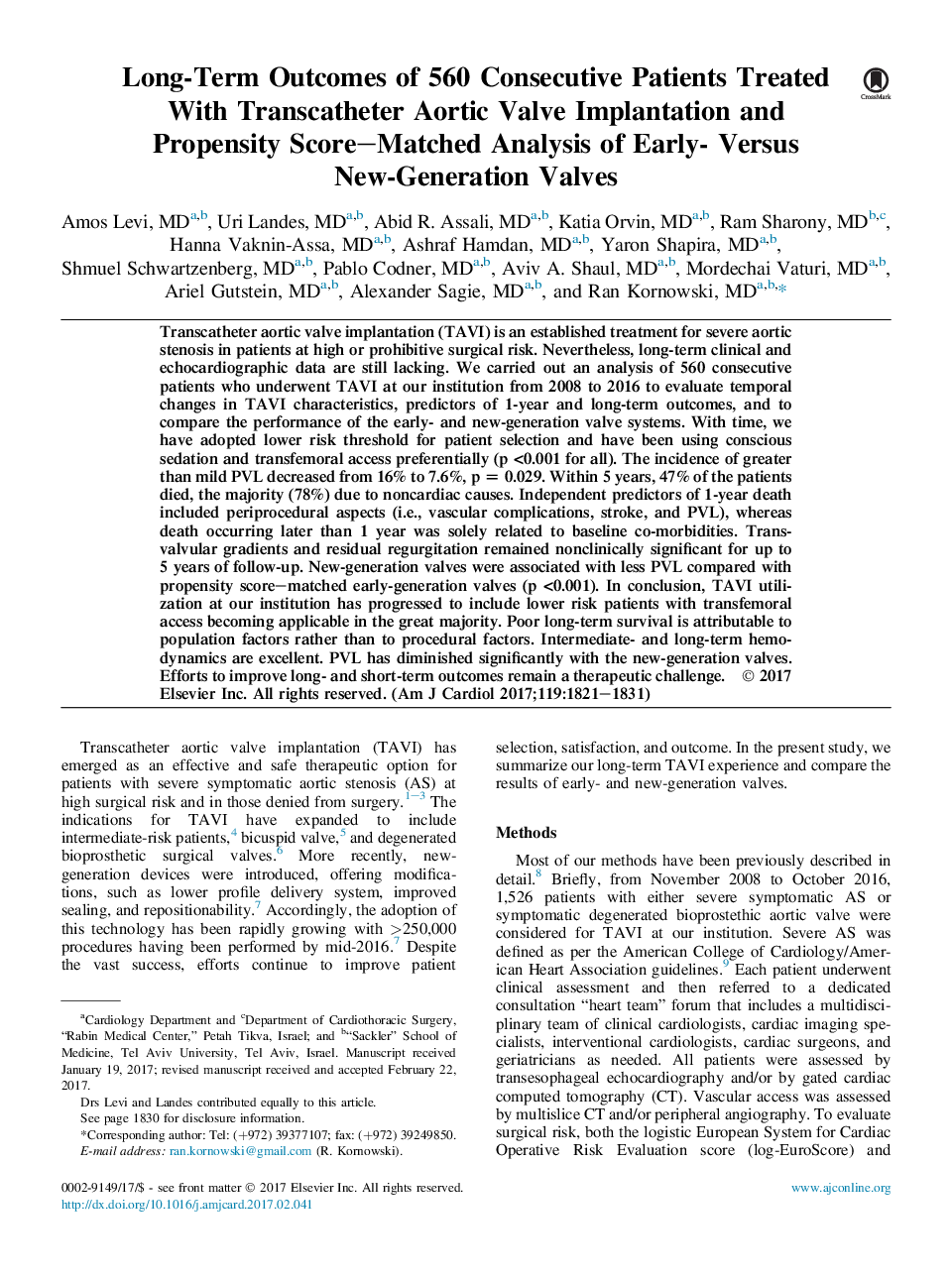| کد مقاله | کد نشریه | سال انتشار | مقاله انگلیسی | نسخه تمام متن |
|---|---|---|---|---|
| 5594909 | 1572086 | 2017 | 11 صفحه PDF | دانلود رایگان |
عنوان انگلیسی مقاله ISI
Long-Term Outcomes of 560 Consecutive Patients Treated With Transcatheter Aortic Valve Implantation and Propensity Score-Matched Analysis of Early- Versus New-Generation Valves
دانلود مقاله + سفارش ترجمه
دانلود مقاله ISI انگلیسی
رایگان برای ایرانیان
موضوعات مرتبط
علوم پزشکی و سلامت
پزشکی و دندانپزشکی
کاردیولوژی و پزشکی قلب و عروق
پیش نمایش صفحه اول مقاله

چکیده انگلیسی
Transcatheter aortic valve implantation (TAVI) is an established treatment for severe aortic stenosis in patients at high or prohibitive surgical risk. Nevertheless, long-term clinical and echocardiographic data are still lacking. We carried out an analysis of 560 consecutive patients who underwent TAVI at our institution from 2008 to 2016 to evaluate temporal changes in TAVI characteristics, predictors of 1-year and long-term outcomes, and to compare the performance of the early- and new-generation valve systems. With time, we have adopted lower risk threshold for patient selection and have been using conscious sedation and transfemoral access preferentially (p <0.001 for all). The incidence of greater than mild PVL decreased from 16% to 7.6%, p = 0.029. Within 5 years, 47% of the patients died, the majority (78%) due to noncardiac causes. Independent predictors of 1-year death included periprocedural aspects (i.e., vascular complications, stroke, and PVL), whereas death occurring later than 1 year was solely related to baseline co-morbidities. Transvalvular gradients and residual regurgitation remained nonclinically significant for up to 5 years of follow-up. New-generation valves were associated with less PVL compared with propensity score-matched early-generation valves (p <0.001). In conclusion, TAVI utilization at our institution has progressed to include lower risk patients with transfemoral access becoming applicable in the great majority. Poor long-term survival is attributable to population factors rather than to procedural factors. Intermediate- and long-term hemodynamics are excellent. PVL has diminished significantly with the new-generation valves. Efforts to improve long- and short-term outcomes remain a therapeutic challenge.
ناشر
Database: Elsevier - ScienceDirect (ساینس دایرکت)
Journal: The American Journal of Cardiology - Volume 119, Issue 11, 1 June 2017, Pages 1821-1831
Journal: The American Journal of Cardiology - Volume 119, Issue 11, 1 June 2017, Pages 1821-1831
نویسندگان
Amos MD, Uri MD, Abid R. MD, Katia MD, Ram MD, Hanna MD, Ashraf MD, Yaron MD, Shmuel MD, Pablo MD, Aviv A. MD, Mordechai MD, Ariel MD, Alexander MD, Ran MD,